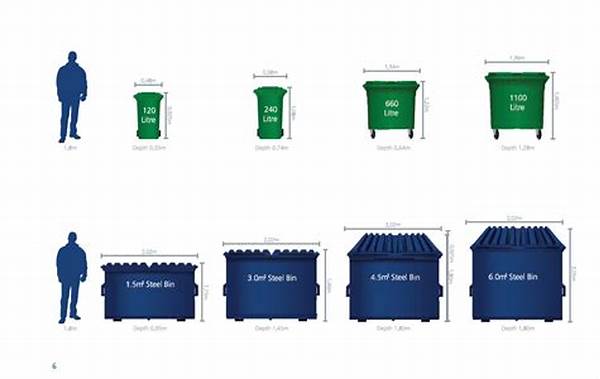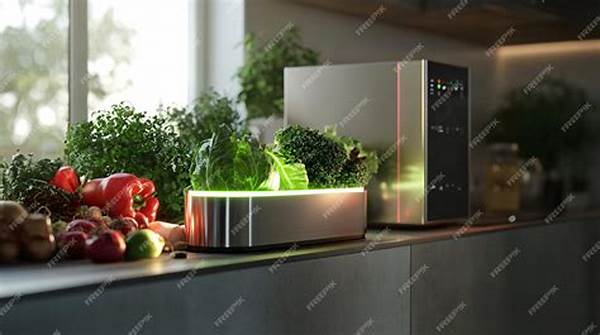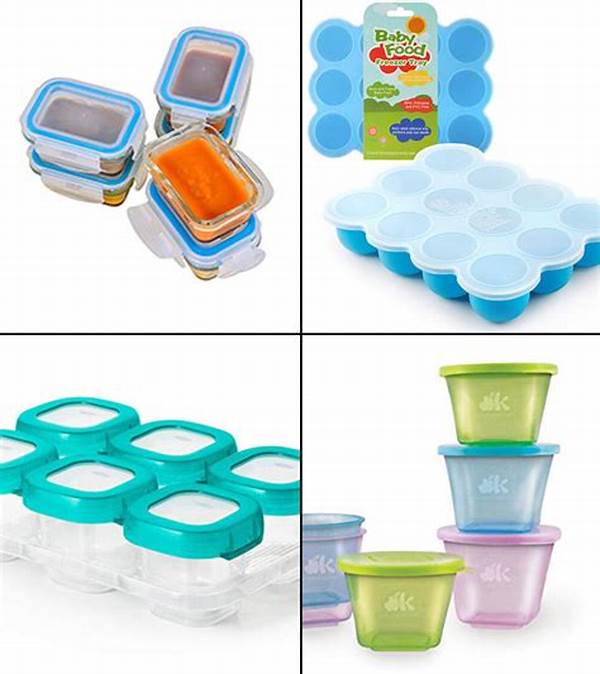When it comes to managing waste, especially in larger communities or industrial settings, having the right mobile trash container can make all the difference in maintaining a clean and efficient environment. Making the decision to compare mobile trash containers by size and capacity is crucial for determining which container best suits your needs—be it residential, municipal, or commercial use. It’s not just about having a place to dump trash; it’s about managing waste effectively and sustainably without compromising on convenience or environmental standards. In a world where waste management is increasingly under scrutiny, the choice of container can not only affect the bottom line but also enhance public perception of environmental responsibility.
Read More : Glass Food Storage Containers Replacing Plastic In Modern Kitchens
Choosing the right mobile trash container isn’t just a mundane decision. It’s a strategic move that communicates your understanding of sustainability, efficiency, and practicality. Trash containers come in various sizes and capacities, designed to accommodate different amounts of waste. A minor miscalculation in the required size or capacity can lead to logistical nightmares, extra costs, and inefficiencies. Whether you’re a manager at a bustling factory, a municipal officer, or a homeowner looking for the most efficient waste management system, size and capacity considerations are pivotal.
The marketplace offers a myriad of options. From compact containers ideal for urban residential complexes to large-capacity behemoths that can handle industrial waste, each has unique strengths. So how do you make the right pick? The secret lies in assessing your specific needs against the available options. Luckily for you, we have delved into this topic with all the intrigue and fascination it deserves, aiming to uncover the hidden gems of information that could turn your waste management system from ordinary to extraordinary.
Understanding the Variables: What Size and Capacity Mean for You
Now that we’ve set the stage, let’s delve into a more detailed discussion about mobile trash containers.
Selecting the right mobile trash container is akin to choosing a new gadget; you want something that suits your lifestyle and meets every specific need. When you dive into the nitty-gritty to compare mobile trash containers by size and capacity, the first question to answer is what volume of waste you’ll need to accommodate. This varies drastically depending on whether you’re an inner-city dweller with weekly pickups or a manufacturing plant manager with complex waste streams. Understanding your waste production patterns allows for rational decision-making, which is essential for efficient operations and achieving sustainability goals.
The next aspect to consider is the environment in which the container will be used. A container for a suburban garden might necessitate wheels for mobility across soft terrain, while a dense urban location may demand a slim design for alley placement. The usability of containers is frequently underestimated, yet it dramatically impacts efficiency. This is where size meets capacity in a dance of practicality. A bulky, unmovable container will be nothing more than a hindrance if situated in a cramped environment. Consequently, ensuring a balance between size and accessibility can transform waste management chaos into harmony.
Beyond practical considerations, there’s also the magic of technology. Modern containers are not just idle pieces of plastic or metal; some are equipped with IoT-enabled sensors to alert users when they’re reaching capacity. Such features can provide a semblance of personality and intelligence to the otherwise mundane world of waste storage. This kind of savvy, efficient setup is where compare mobile trash containers by size and capacity becomes a truly captivating endeavor. It intertwines environmental stewardship with technological advancement in a way that is both fresh and necessary.
The Importance of Capacity
Determining the capacity that’s best for your needs involves a careful balance of current waste output and potential growth. Growth in waste production might be linked to an increase in population or production. Containers that don’t meet future needs may lead to increased frequency of waste collection, inadvertently incurring more costs.
Read More : What Makes Sea Containers London The Most Stylish Hotel In The City
Size Versus Capacity: Striking the Right Balance
In your quest to compare mobile trash containers by size and capacity, it’s easy to be seduced by larger sizes, imagining they always translate to better capacity. However, it’s the optimal use of space that dictates the most efficient choice. Oversized containers might be impressive, but maximizing capacity in a correct size without wasting space brings the true value in waste management solutions.
When considering the most fitting mobile trash containers for varying requirements, multiple discussions arise about the overlaps between size, capacity, and functionality. Here are some engaging topics that individuals and organizations alike could explore:
Understanding the Impact
The mobile trash container you choose has far-reaching impacts beyond simple waste storage. Not only does it reflect your commitment to environmental sustainability, but it also plays a crucial role in overall efficiency. In today’s conscientious world, where everyone from consumers to large corporations is scrutinizing their ecological footprints, even your waste management solutions matter.
Developing a keen eye for detail will be rewarding in this regard. Imagine the satisfaction of watching your waste management system not only save time and resources but also make you a herald of modern sustainability practices. That’s the moment when your decision to compare mobile trash containers by size and capacity truly pays off, shifting your position from a participant to a leader in the waste management space.
Ultimately, whether you are selecting containers for a home, a business, or an industrial site, understanding and comparing these essential variables can lead to substantial benefits in the long term. Engaging in thoughtful analysis and decision-making in container selection bridges practicality and forward-thinking, ultimately contributing to a cleaner, more efficient, and sustainable future.










